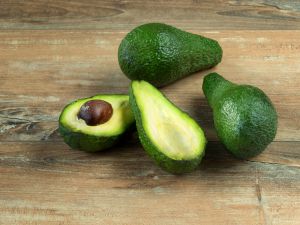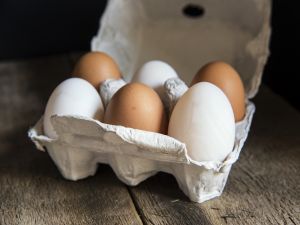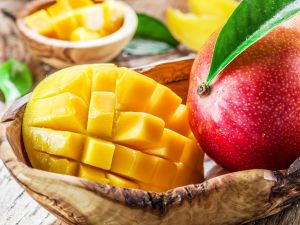Toggle search bar
Pacific Northwest Crab Cakes with Baby Greens and Mango-Avocado Salsa
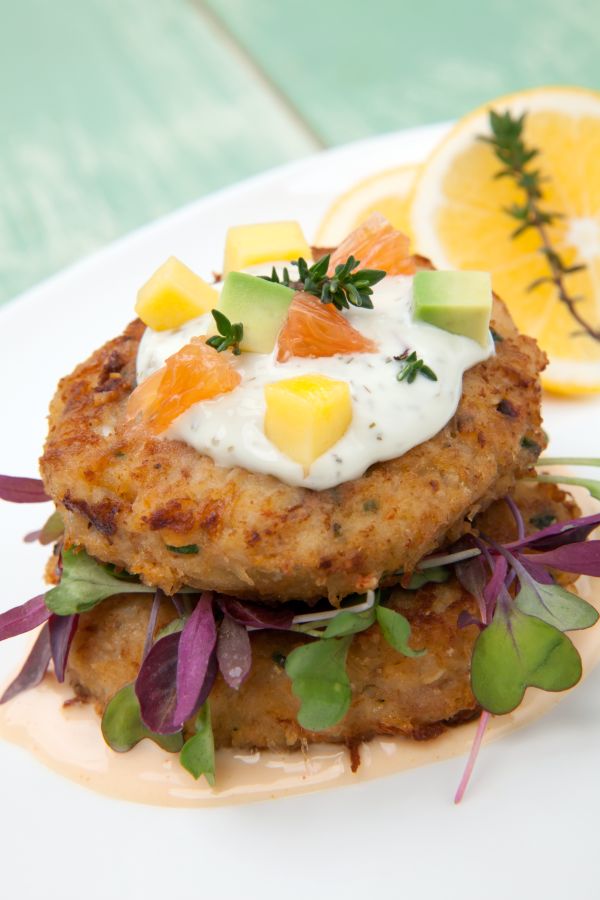
Ah, the delights of British Columbia. The region’s native peoples occupied the area for around ten thousand years, and then English traders and trappers came along with Spanish explorers in the late 1700’s. The English sent settlers in the mid 1800’s and the settlers did what came naturally to them, which is to explore the ingredients of the region and learn from both the natives and from trial and error how to blend their own English culture with that of their new surroundings.
This resulted in a cuisine that is often characterized by extensive use of seafood and dairy products from its historical reliance on its seaports and fishing industry, as well as extensive dairy farming inland. Native American foods and cooking methods such as corn meal cakes, oysters, and clam bakes were adopted by early immigrants to British Columbia. Most European herbs are not hardy in much of British Columbia away from the coast, and as a result, many of the dishes do not use strong seasoning, nor are there many particularly spicy recipes. We’ll take up this culinary adventure with Pacific Northwest Crab Cakes with Baby Greens and Mango-Avocado Salsa. Regarding the question of sustainability, all Pacific Northwest Coast Dungeness Crab (from California, Washington, Oregon and British Columbia) are all “best choices”, along with US-sourced Blue Crab, King Crab and Stone crab. So there’s plenty to choose from. As usual for all seafood, crabs are rich in heart-healthy omega-3 fatty acids, and eating fish and seafood may lower rates of heart disease. Even though crabs are low in total fat, they are still a good source of Omega-3 fatty acids with a three-ounce portion of cooked crab having about 300-500 milligrams of Omega-3’s. While many types of crabs may contain some amounts of mercury or other contaminants, Dungeness crabs from the Pacific Coast have no listed limitations. Crabs are rich in selenium, a nutrient that plays an important role in protecting our bodies from oxidative damage, where a three-ounce serving of crab contains about half of the daily requirement. Selenium is part of enzyme systems that reduce oxidative damage to cells and tissues. Eating enough selenium is important to keep these systems functioning and there may even be a link between eating a high-selenium diet and cancer reduction. A minor note of caution, crab is one of the few foods that are high in sodium in their natural state. In a three-ounce serving, blue crab has more than 200 milligrams of sodium. Dungeness crab has more than 300 milligrams of sodium, and Alaska king crab has over 900 milligrams of sodium. The natural sodium in crabs probably won't tip the sodium scales too much for healthy people, but in those who are on a sodium-restricted diet should keep an eye out. Because other than the sodium concern, crabs have healthy levels of protein and many vitamins and minerals including vitamin B12, niacin, phosphorus, zinc, copper and chromium, which works with insulin in the metabolism of sugar helping the body to maintain normal blood glucose levels. Studies indicate chromium helps to raise the levels of HDL (or "good" cholesterol), which can reduce the risk of coronary artery disease and strokes. Onward to cooking our delightful Pacific Northwest Crab Cakes with Baby Greens and Mango-Avocado Salsa: 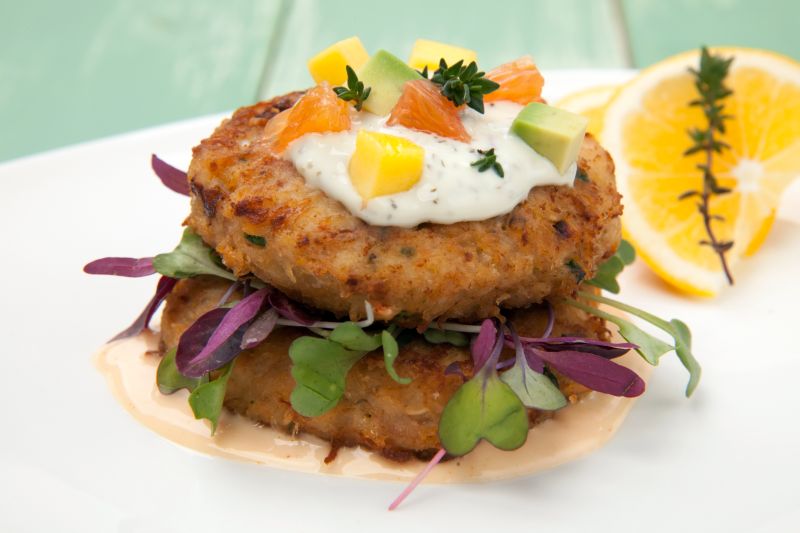
Pacific Northwest Crab Cakes with Baby Greens and Mango-Avocado Salsa:
Ingredients: Crab Cakes: 1 pound lump crab meat 2 eggs or egg-white equivalent 1/2 cup plain unsweetened soy milk 1 TBSP fresh cilantro 1 TBSP minced garlic 2 tsp Worcestershire sauce 2 tsp fresh or dried parsley 2 tsp grated red onions 2 TBSP extra virgin olive oil or light butter or butter 1 1/2 cups whole wheat or Panko bread crumbs (+ extra to coat) 1 tsp dry mustard 1 tsp fresh minced dill 1 tsp fresh lemon juice 1/2 tsp cayenne pepper 1 TBSP Canola oil 1 TBSP Extra Virgin Olive Oil 6 TBSP Organic/Natural Tartar Sauce 1/2 cup cubed fresh mango 1/2 cup cubed fresh tangerine 1/2 cup cubed chilled avocado 1/2 cup non-fat sour cream or soy-based sour cream 1 tsp lemon juice 1/2 tsp tomato paste 1/2 tsp fine ground black pepper 1/4 tsp garlic powder 1/4 tsp organic sea salt Mixed baby greens Minced fresh thyme leaves and lemon wedges for garnish
Preparation:
Estimated Nutrition Per Serving:
Calories: 340 Total Fat: 20g Saturated Fat: 4g Sodium: 620mg Protein: 20g Fiber: 0g |
